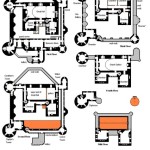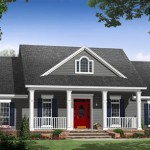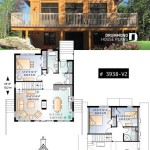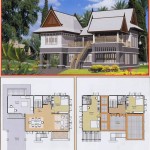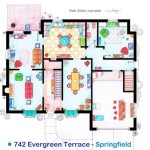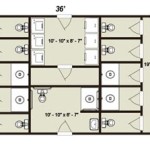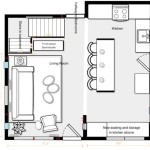Spanish Style House Plans With Courtyard: A Guide to Design and Functionality
Spanish style house plans, often referred to as Spanish Colonial or Spanish Revival, evoke a sense of warmth, history, and connection to the outdoors. These designs are characterized by their stucco walls, red tile roofs, arched doorways, and decorative ironwork. A particularly compelling element of many Spanish style homes is the inclusion of a central courtyard, which serves as both an aesthetic focal point and a functional extension of the living space. This article will explore the key features of Spanish style house plans with courtyards, examining their design principles, practical advantages, and considerations for implementation.
The architectural foundation of Spanish style originates from the Spanish colonization of the Americas, particularly in regions like California and the Southwest. These homes were initially designed to withstand hot, arid climates, utilizing materials and layouts that promoted natural cooling and ventilation. The courtyard became an integral part of this strategy, providing a shaded, enclosed space that could be used for relaxation, entertaining, and even growing plants. Over time, the style has evolved, incorporating modern amenities while retaining its distinct character.
Modern adaptations of Spanish style homes with courtyards often blend traditional elements with contemporary design principles. While stucco walls and red tile roofs remain common, interior layouts may be more open and flexible to accommodate modern living. Sustainable building practices are also increasingly incorporated, focusing on energy efficiency and the use of eco-friendly materials. However, the central courtyard remains a defining feature, offering a unique and valuable addition to the home.
Understanding the Key Elements of Spanish Style Courtyard Homes
Several elements contribute to the distinct character of Spanish style house plans with courtyards. Each plays a role in both the aesthetic appeal and the functional performance of the design.
Stucco Walls: Stucco is a cement-based plaster that provides excellent insulation and durability. Its textured surface and light color reflect sunlight, helping to keep the interior cool. In Spanish style homes, stucco is often used on both the exterior and interior walls, creating a cohesive and timeless look. The stucco finish can range from smooth to heavily textured, depending on the desired aesthetic.
Red Tile Roofs: The distinctive red tile roof is perhaps the most recognizable feature of Spanish style architecture. These tiles, typically made of clay, are highly durable and provide excellent insulation against heat. Their curved shape also creates a visually appealing texture. While traditional clay tiles are still widely used, modern alternatives made from concrete or composite materials offer similar aesthetics with improved durability and affordability.
Arched Doorways and Windows: Arches are a common architectural element in Spanish style homes, adding a touch of elegance and visual interest. They are often used for doorways, windows, and covered walkways, creating a sense of openness and flow. The use of arches also contributes to the overall sense of symmetry and balance that characterizes Spanish style design.
Wrought Iron Details: Decorative ironwork is another hallmark of Spanish style. Wrought iron is often used for window grilles, balconies, gates, and light fixtures, adding a touch of ornamentation and security. The intricate designs of wrought iron elements can range from simple geometric patterns to elaborate floral motifs. The dark color of the iron provides a contrasting accent to the light-colored stucco walls.
The Courtyard: The central element, the courtyard, is an open-air space enclosed by the walls of the house. It serves as an outdoor living area, providing a private and sheltered space for relaxation, entertaining, and gardening. Courtyards can vary in size and shape, depending on the overall design of the house. They often feature a fountain, a fireplace, or other decorative elements that enhance their ambiance. The courtyard also provides natural light and ventilation to the surrounding rooms, improving the overall comfort of the home.
The Practical Advantages of Having a Courtyard
Beyond their aesthetic appeal, courtyards in Spanish style homes offer several practical advantages that enhance the living experience.
Enhanced Privacy: The enclosed nature of a courtyard provides a high degree of privacy, shielding occupants from neighbors and street traffic. This can be particularly valuable in densely populated areas where privacy is limited. The courtyard becomes a personal sanctuary where residents can relax and enjoy the outdoors without feeling exposed.
Natural Light and Ventilation: Courtyards allow natural light to penetrate deep into the interior of the house, reducing the need for artificial lighting. They also promote natural ventilation, allowing fresh air to circulate throughout the home. This can significantly improve indoor air quality and reduce energy consumption for heating and cooling.
Outdoor Living Space: The courtyard functions as an extension of the living space, providing an outdoor area for dining, entertaining, and relaxing. It can be furnished with comfortable seating, a dining table, or even an outdoor kitchen. The courtyard allows residents to enjoy the outdoors without leaving the comfort and privacy of their home.
Climate Control: In hot, arid climates, courtyards can help to moderate the temperature of the house. The shaded area provided by the courtyard reduces the amount of direct sunlight that reaches the interior walls, keeping the house cooler. The courtyard also facilitates natural ventilation, which helps to dissipate heat. By strategically planting trees and shrubs in the courtyard, residents can further enhance its cooling effect.
Aesthetic Appeal: The addition of a courtyard significantly enhances the aesthetic appeal of a Spanish style home. The courtyard provides a focal point for the design, creating a sense of harmony and balance. It also offers opportunities for landscaping and decorative elements that enhance the overall beauty of the home. The sound of a fountain, the scent of flowering plants, and the visual appeal of the landscaping all contribute to the sensory richness of the courtyard environment.
Considerations for Implementing a Spanish Style Courtyard Plan
When planning a Spanish style home with a courtyard, several factors should be considered to ensure that the design meets your needs and preferences. These factors include the size and shape of the courtyard, its orientation, its landscaping, and its integration with the interior of the house.
Size and Shape: The size and shape of the courtyard will depend on the overall size and layout of the house, as well as your personal preferences. A larger courtyard will provide more space for outdoor living, while a smaller courtyard may be more manageable to maintain. The shape of the courtyard can also affect its functionality and aesthetic appeal. Square or rectangular courtyards are relatively easy to design and furnish, while more irregular shapes can create a more dynamic and interesting space.
Orientation: The orientation of the courtyard is crucial for maximizing its benefits. In hot climates, it is generally best to orient the courtyard to the north or east to minimize exposure to the intense afternoon sun. This will help to keep the courtyard cooler and more comfortable during the hottest part of the day. In cooler climates, orienting the courtyard to the south can help to maximize sunlight exposure and warmth.
Landscaping: The landscaping of the courtyard is an essential aspect of its design. Plants can provide shade, privacy, and beauty. Native plants are often a good choice, as they are adapted to the local climate and require less maintenance. Consider incorporating trees, shrubs, flowers, and groundcover to create a lush and inviting environment. The addition of a fountain or other water feature can also enhance the ambiance of the courtyard.
Integration with the Interior: The courtyard should be seamlessly integrated with the interior of the house. This can be achieved by using large windows and doors that open onto the courtyard, creating a sense of flow between the indoor and outdoor spaces. Consider using similar materials and finishes in both the interior and exterior to create a cohesive design. The placement of key rooms, such as the living room, dining room, and kitchen, should be carefully considered to maximize their connection to the courtyard.
Budget: The cost of building a Spanish style home with a courtyard can vary depending on the size, materials, and finishes used. It is important to establish a budget early in the planning process and to work with a qualified architect or builder to ensure that the project stays within budget. Consider prioritizing the elements that are most important to you, such as the size of the courtyard, the quality of the materials, and the level of detail in the design.
Spanish style house plans with courtyards offer a unique blend of beauty, functionality, and connection to the outdoors. By understanding the key elements of this design style and considering the practical advantages of a courtyard, homeowners can create a living space that is both aesthetically pleasing and highly functional. Careful planning and attention to detail are essential for ensuring that the design meets your needs and preferences, creating a home that you will enjoy for years to come.

46 Trendy House Plans With Courtyard Spanish Style Court Yard Dream

3 Bed Spanish Style House Plan With Front Courtyard 46072hc Architectural Designs Plans

Mediterranean Style House Plan 4 Beds 3 5 Baths 3163 Sq Ft 72 177 Plans Courtyard Southwest

Spanish Colonial With Central Courtyard 82009ka Architectural Designs House Plans

Vizcaya The Pantries Courtyard House Plans Hacienda Floor

Small Spanish Contemporary House Plan 61custom Modern Plans

Spanish Courtyard Home Plan 42828mj Architectural Designs House Plans

Spanish Style House Plans Home Designs The Designers

Villoresi Small Luxury House Plan Courtyard

Home Plan Casoria Tuscan House Plans Design Sater Collection

